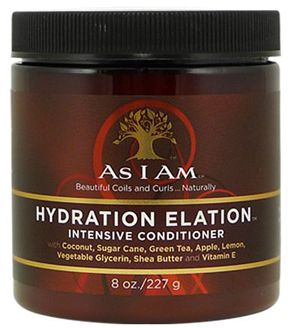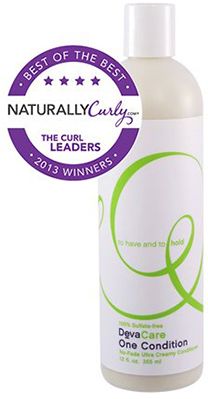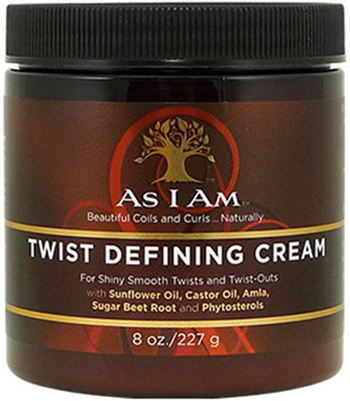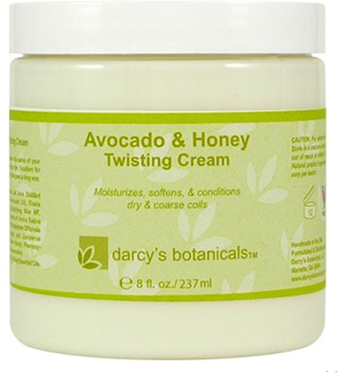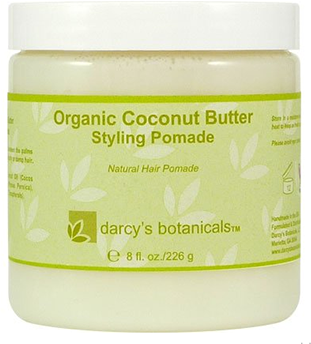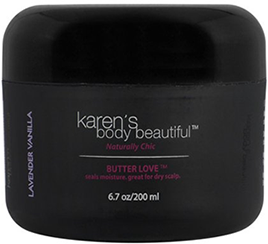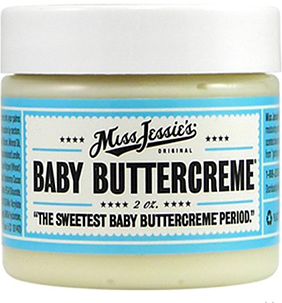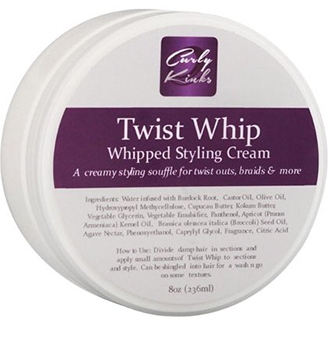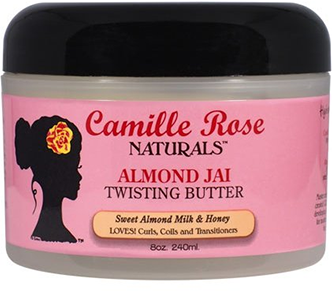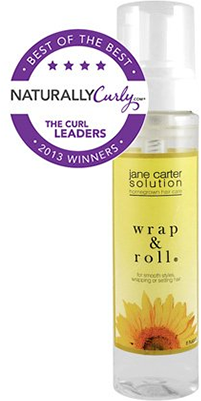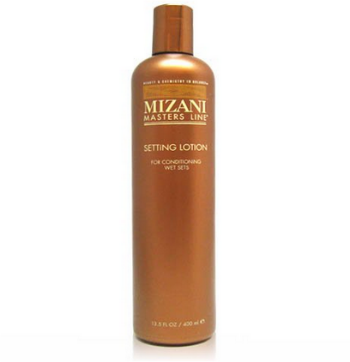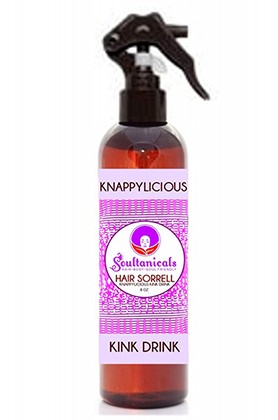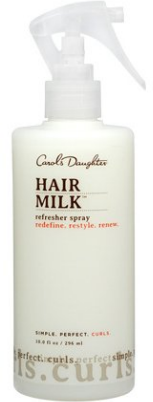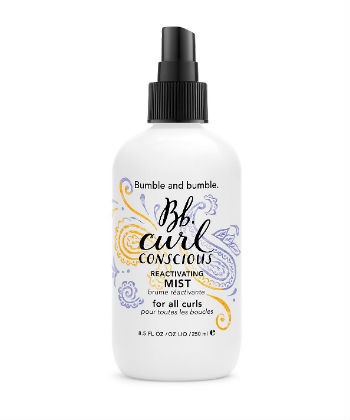Search Results: Sabrina Perkins

 Are you addicted to slip? You know…slip! Our hair tends to be dry and the older it gets–or further from wash day–the dryer it gets. Curly or coily hair tends to curl or coil around itself and create tangles or knots (yes, knots”> when dry. Many of us are always on the hunt for products that will properly coat the knots and tangles and allow them to glide through with a comb or our fingers easily and without much friction. Slip just describes how slippery a product is and that’s usually conditioners with some natural oils.
Are you addicted to slip? You know…slip! Our hair tends to be dry and the older it gets–or further from wash day–the dryer it gets. Curly or coily hair tends to curl or coil around itself and create tangles or knots (yes, knots”> when dry. Many of us are always on the hunt for products that will properly coat the knots and tangles and allow them to glide through with a comb or our fingers easily and without much friction. Slip just describes how slippery a product is and that’s usually conditioners with some natural oils.
Slip is a curlies best friend but what makes up the BEST slip? There’s an actual science to it and it’s more than what’s the most popular or the most expensive. It’s what’s in the makeup of the product. Here are a list of ingredients we see every day on the back of bottle and jar and as we skim over them do we really know what they do and how they give us the best slip possible? Now, it’s time to see what makes all those products work so well.
Fatty Alcohols
Hopefully by now you know that not all alcohols are bad for your tresses or can cause dryness or frizz. Fatty alcohols are larger alcohols and are characteristically derived from natural sources. Because of their larger carbon count they tend to be oilier or referred to as “fatty”. They are often used in hair and body products as an emollient and make the hair smooth by forcing the cuticle to lie flat and have a smoother surface. They also are used in some hair products as thickeners.
Popular fatty alcohols and which popular products you can find them in:
Stearyl Alcohol
An emollient derived from stearic acid which is derived from vegetable fatty acids. Mop Top Daily Conditioner is great at restoring moisture to dry, frizzy hair.
Cetearyl Alcohol
A blend of natural emulsifiers derived from vegetable or corn oil. Curl Junkie Daily Fix Cleansing Conditionercleanses without drying or stripping the hair.
Cetyl Alcohol
Derived from vegetable oils like palm or coconut. Ouidad Moisture Lock Leave-In Conditioner locks moisture in and hydrates the hair shaft.
[prodmod]Vegetable-Derived Oils
Vegetable-derived oils or vegetable oils are derived from the fatty portion of a plant but in the hair world they are more known as carrier oils. They are often times used to dilute essential oils and although not as potent as essential oils they still can offer therapeutic benefits. They are used in natural creams, butters, lotions, body oils, and hair products to because they are superior moisturizers, strengtheners and nourishments to hair.
Popular vegetable oils and which popular products you can find them in:
Olive oil
An oil pressed from ripe olives and doesn’t contain chemicals. Helps in preventing hair loss and contains antioxidants that promote a healthy hair and scalp. It also strengthens and soothes out the hair cuticle.Aubrey Organics White Camellia Conditioner is rich in vitamins and will deep-condition and protect your curls.
Jojoba oil
Considered an oil but really a liquid wax that’s extracted from the seeds of a shrub in the Southwest region of the United States. Great for all hair types and promotes hair growth. Very similar to sebum so it’s naturally safe to apply to hair and skin and it’s a great moisturizer.
Curl Junkie Beauticurls Argan & Olive Oil Daily Hair Conditioner is great for detangling and moisturizing and perfect for all hair types.
Avocado oil
An edible oil pressed from the avocado or the king of the hair fruits. It’s full of vitamins like A, E and D and potassium and is amazing for deep conditioning treatments.
Jessicurl Aloeba Daily Conditioner allows you to get the just right of moisture without weighing down your curls. Lightweight but a moisture powerhouse.
[prodmod]Vegetable-Derived Butters
Very similar to vegetable oils but the butters are fixed vegetable fats that are solid at ordinary or regular temperatures but usually melt at or below body temperature.
Shea Butter
Off-white fatty substance from the nuts of the African Shea tree. Not a conditioner but rather a sealer that will seal in the moisture you need to keep your hair moisturized.
SheaMoisture Raw Shea Butter Moisture Retention Shampoo heals dry, damaged hair, and promotes growth and strength.
Cocoa Butter
A pale-yellow fatty substance extracted room the cocoa bean. High in Vitamin E and rich in minerals and has been used in hair conditioners for years. It increases the resilience of hair and adds volume.As I Am DoubleButter Cream Rich Daily Moisturizer is a rich emollient blend of organic oils and vitamins and add softness, shine and manageability.
Mango Butter
The fatty acid that’s cold pressed from the mango seeds and the mango originates from southern Asia. It’s great for nourishing hair and scalp and has moisture sealing properties like most butters.Oyin Handmade Burnt Sugar Pomade contains a massive blend of oils, butters and vegetable waxes is a superior humectant and protectant for your hair while adding high sheen and serious moisture.
[prodmod] Hydrolyzed proteins
Hydrolyzed proteins
Proteins that have been hydrolyzed just mean the chemical compound has been split into smaller units through the hydrolysis process. This makes them easier to be absorbed into the hair shaft. They increase hair’s ability to retain moisture and impart gloss to damaged hair.
Hydrolyzed Silk proteins
Derived from one of the strongest fibers in the world. Forms a crystalline protective barrier around hair strands and improves hair’s elasticity.
Ouidad Curl Recovery Ultra Nourishing Cleansing Oil is a nourishing cleansing oil envelopes the hair shaft to rebuild and protect it from damage and retain moisture and shine.
Hydrolyzed wheat proteins
A protein derived from whole wheat that is moisturizing and conditioning to hair.Curlisto Repair Styling Cream is a leave-in conditioner that will add shine and softness while warding off breakage and dullness.
Hydrolyzed Soy proteins
Water soluble protein derived from soy that strengthens and mends the hair fiber while increasing the hair’s ability to hold moisture. It will add shine and smooth out the hair shaft.U R Curly Tight Curl Enhancer will rejuvenate your curls, coils and waves with this alcohol-free, rich with glycerin and soy protein curl enhancer that will work hard at conditioning your hair.
[prodmod]Our curly hair is fragile, and many of the styling choices our straighter sisters pretty much take for granted must be used sparingly or not at all for us. It’s ok…that just means we’re special but that also means we have to work a tad harder at keeping our tresses damage free. Damage can occur through styling, neglect, chemicals, hormones, illness…the list can go on, and although we try to prevent damage, sometimes it’s too late. So many products tell you what they can do but do they explain how? Here’s a breakdown of ten products and what their ingredients can do to prevent and temporarily remedy current damaged curls.
John Frieda Root Awakening Shampoo
Eucalyptus has antiseptic and antifungal properties so the oil keeps your scalp healthy by preventing microbial growth while promoting healthy hair growth. It provides relief in scalp problems like dandruff, psoriasis, scalp pimples, and a dry scalp. It also increases the elasticity of your strands. Peppermint oil will promote hair growth by penetrating the hair follicle to improve blood circulation and increase oxygen supply. It’s also an astringent and balances your scalp’s pH level so you have a normal oil producing level.
What biotin can do for your tresses is a well-known secret. It’s always been known but with the surge of natural hair, it’s become a go-to for healthier hair growth among naturals. Biotin is a coenzyme and vitamin B or vitamin H. It’s not just for hair growth, as it’s sometimes used for diabetes and supports the health of skin, nerves, digestive tract, metabolism and cells. It’s found naturally in eggs, brewer’s yeast, cauliflower, and cucumbers.
It’s been called “hair food” since it improves the health and strength of your incoming strands. The commonly suggested dosage is 5000 mcg a day as a supplement, but even if you don’t want to pop a pill or feel you are not getting enough of it in your diet, you can just buy it in your hair products. Check out these top 14 shampoos with biotin.
Organix Biotin and Collagen Shampoo
The biotin in this thick shampoo is coupled with collagen for double benefit. You get the ProVitamin B7 (biotin”> that infuses into your hair strands while the collagen adds volume and dimension to give you thicker, fuller looking hair. When you add the hydrolyzed wheat protein for strength your hair is left fuller, thicker, and healthier.
Rhassoul or ghassoul is a natural, highly-enriched mineral clay from the Atlas mountains of Morocco. The clay has been used by Moroccan women since the eighth century to care for their hair and skin. It’s a popular natural alternative to regular shampoo for cleansing hair and scalp by many naturals today. Rhassoul clay tends to be less expensive than natural hair shampoos, and if you are seeking a happy medium between a shampoo and a co-wash, then products with rhassoul clay may be the answer. What’s even better is the fact that you will find more small businesses (mostly on Etsy”> that create and sell these wonderful hair care and skin care products with rhassoul clay. Who doesn’t like supporting small businesses? Check out these 15 products with rhassoul clay.
Top 15 Products with Rhassoul Clay
Don’t worry, there isn’t a battle of the clays going on. There is just the need to clarify (pun intended”> the differences and the similarities of the two highly popular and highly nutrient-rich clays. They are being used for hair, face and body but is one better than the other? Does one work better in your hair while the other does better for your body? It’s time to learn the differences between the two and how they can give you healthier, lovelier hair and bodies.
Rhassoul Clay
Rhassoul clay or ghassoul clay is a natural mineral clay from the Atlas Mountains of Morocco. It’s been mined and used since the 8th century and has been used by Moroccan women for centuries to care for your skin and hair. The word rhassoul derives from the Arabic word for washing, “Rhassala.” It has an unmatched ability to draw out impurities from the skin and hair and is used for detoxifying, cleansing and reducing dryness. It has a reddish brown color and has been used for soothing scalp ailments such as dandruff and psoriasis.
Benefits
Rhassoul clay is the moisturizer and softener. It reduces dryness in the hair while also removing toxins and product buildup. It improve hair’s elasticity and unblocks your scalp’s pores. It reduces flakiness and aids in detangling and although it cleans like bentonite clay but unlike the detoxifying clay, it leaves your hair soft and moisturized.
Bentonite Clay
Bentonite clay is composed of aged volcanic ash. It’s an impure mud that is incredibly powerful with its ability to produce an electric charge when added to water. With its charge it can remove positively charged products from the hair and body and it absorbs and removes toxins, impurities, heavy metals, and chemicals. Considered a healing clay, bentonite clay has a high concentration of minerals like calcium, iron, magnesium, potassium and silica and there are several type of bentonite clays, each named after its dominant element.
Benefits
Bentonite clay is the detoxifier, the cleanser or the restorer of your hair’s balance. It draws out the impurities and restores your hair’s pH balance and believe it or not it can be used externally or internally according to some. It’s used in many detox and cleansing products and it makes sense that it’s used as a cleansing mask for the hair. It draws out the dirt, impurities, and product buildup on the hair and scalp.
MORE: DIY Bentonite Shampoo Bar
Is one better than the other?
No, not really. Rhassoul clay tends to be pricier than bentonite clay but they have different purposes despite both of them being great for drawing out toxins, product build up and dirt from our hair and scalp. If you need a clay to be highly absorbent than bentonite is the one for you but if you need that extra moisture and softness then rhassoul is the better of the two for you. It matters on what your goal for your hair at that moment and neither is better than the other.
Below I have two videos by DuchessGabrielle, a believer that nature is the best consultant for any issues with your face, body or hair. She gives in-depth information and recipes for clay masks using rhassoul and bentonite clay for your natural hair.
Watch Rhassoul Clay Mask for Natural Hair
Watch Bentonite Clay Mask for Hair
Discovering your favorite products and mastering certain styling techniques does not happen overnight. Anything new takes time to learn with the hopes of one day discovering those Holy Grail products and mastering various techniques. Despite all the knowledge, videos, books, and hair meet and greets you may attend prior to or at the beginning of your natural hair journey, you will have some hiccups and misconceptions on what you are doing and what will work for you. We’ve all done it.
Styling
Not every style, product, or technique will work for you. The same steps someone else takes to achieve a style may require different steps in order for you to achieve that same style. For example, if you are trying to achieve small curls, someone with a looser curl pattern will probably have to use small magnetic rollers while tighter curl pattern could just fingercoil; same goal, different routes. If you have looser curls and want to achieve an afro style, your hair may require more fluffing and the use of an afro pick.
The route to success may come with multiple failures, but it is a means to discover what your hair really needs. I know some are not too keen on curl pattern’s place in the hair typing system, but it can help in figuring out what will work for your tresses. A 4C may not be able to achieve the same styles as a 3A just like a 2B is may not be able achieve the same styles as a 4A, but many styles can be achieved by any texture; again, it’s about how you get there. Once you accept that, you can explore other means to attain dazzling styles that will give you all the confidence you need to keep going.
Curl Definition
Curl definition is one of many goals for many newbies, and it can be a disheartening blow if you don’t realize that everyone cannot attain curl definition. Many women with Type 4 hair often get discouraged or dispirited when they do not see the curls they may want and many fine-haired women with low-density hair feel the same way when they cannot achieve the volume they crave. If your hair is frizzy by nature and you cannot achieve curl definition, then explore two-strand twists, Bantu knots, braid outs, and flat-twist out for stretched styles. If you fine, low-density hair then frizz only adds to the volume that you crave!
Single Strands Knots
Single strand knots (ssk”> or fairy knots are the ultimate annoyance. For many women, no matter how much moisturizing, sealing, and protective styling they do, they will always have ssk. They are little knots at your ends of your hair that seem to pop up out of nowhere. While some have found ways to fight them off with huge success, the vast majority of us have to deal with them.
Frizz
Some aspects of natural hair are here to stay and another fixture of that would be frizz. While many hate frizz, we must embrace it because it is the nature of many textures! Another reason to embrace frizz is because natural hair gets affected by the weather just like relaxed hair does. There are products that claim to fight frizz and many are effective, but there are days and seasons that the frizz will win the battle. You can keep applying generous amounts of heavy gels and serums to fight it off, but sometimes you need to embrace it and learn to work it to your advantage. Want the big hair? Use a light mousse, a light gel, or no styling product at all and ride the wave of volume that will surely give you the height and fullness you implore.
Loving your natural hair is more than just quitting the chemical relaxers. It’s about educating yourself on what techniques, products, and styles will work best for you and your tresses. To properly ride the waves of natural hair you must be willing to accept what your hair can do and what it cannot while first making sure to moisturize, protect, and love your hair no matter what!
What elements of your hair have you started to embrace along your natural hair journey?
Detangling is a necessary evil that naturals endure at every hair length possible. No exceptions to the rule on this one. Everyone has to detangle whether the texture or the thickness or the length of time it takes. It’s one of the biggest challenges that newly naturals face in the beginning that can deter some from staying natural especially if transitioning as the relaxed ends may not need it while the natural roots do!
It’s not all bad and in fact detangling can be made easier and quicker with a few tools, products and patience. It’s all about preparation, and trial and error. You try the basics and as you go along you will pick up tips that will aid in making the process and your hair smoother.
The Tools:
Wide Tooth Comb
The tools of the trade are pretty varied according to your liking and your hair, but most naturals start out with the coveted wide tooth comb. There are several types, brands and when you find your favorite, nothing can make you switch! The wide tooth comb is a standard for naturals for two reasons as it can gently detangle and it removes the shed hairs that may get trapped and create more tangles. One popular comb is the Ouidad Double Detangler that is a favorite because it’s perfect for shower detangling and it’s so amazing it was a 2013 Naturallycurly Editor’s choice. That second column of teeth take the comb to the supreme level of effectiveness.
Denman Brush
This brush is in every natural’s bathroom. A major contender against tangles as it glides through your tresses removing tangles along with shed hairs. It’s also been known to be too rough if not used properly so yanking it through is counterproductive and explains why some have altered it by removing alternate rows of teeth. Once does it’s no longer the Denman brush but the ‘modified Denman’ to lessen the damage of snagging.
Paddle Brush
Despite having a design that most naturals and curlies would run from (some paddle brushes have balls on the end and can snag on your coils”> it’s still used and loved by some naturals including some Vloggers. Use with caution as this brush seems more suited for straight hair.
Tangle Teezer
When this came out there was so much buzz surrounding it. It made your tangles disappear with flexible teeth and has a unique design. Thought to coax tangles and shed hairs out some have found this to be just the opposite. Either you love it or hate it but you have to admit it’s still quite popular with naturals with its varying sized teeth.
Finger Combing
The cheapest and the simplest way to remove tangles, finger detangling is loved by many naturals even if they use any of the other tools mentioned. For one plus, you can feel the hair and the tangles which makes it easier to work through. Honestly I never use anything else to comb through my tangles than my fingers and water.
Water
Sounds kinda crazy but when combined with a few of the other tools mentioned above water is excellent at removing tangles gently and effectively.
[prodmod]
The Techniques:
There are three main ways to remove tangle. You can do so on wet, damp or dry hair. Wet and damp can mean by water, oil or a mixture of the two and all of the tools above can be used by all three means. Some swear by doing the means the prefer and it may merely be a preference but
Dry Detangling
The benefits of dry detangling is keeping the hair stretched. If you are not going to wash it and want it stretched for a style then this is a great technique to keep it moving. It’s the quicker method of detangling since you are only trying to detangle and nothing else like washing or having to dry your hair. It can get tricky or damaging if you don’t use enough oil or butter to properly work through the tangles but if you use too much it’s no longer a dry detangling session and can get messy. Portion control is key!
WATCH: Natural Hair: Dry Detangling with Oil
Wet Detangling
Wet detangling is different from damp detangling that the hair is usually soaking or dripping wet. This is usually done in the shower and during the washday. The key to wet detangling is using the water as a means of getting through the hair. I use this method and allow the water to help work out my knots. There is the combination of water and conditioner for a wet detangling session. The problem with this method is wet hair can be fragile so being gentle is necessary and no rushing!
WATCH: Detangling Curly Hair
Damp Detangling
Damp detangling seems like the best of both worlds and Neno Naturals breaks it down in the video below. Not soaking wet or bone-dry but just enough for you to work through the hair and have minimal or no breakage. The problem with this technique is you may need more water or the use of a conditioner or oil to properly get through the tangles. This method is not great if you are trying to keep your hair straight since you will see some shrinkage due to adding some moisture to your tresses.
WATCH: Why Detangling DAMP (not dry or very wet”> Hair Is Best! The Science
Hand in hair syndrome is a real condition…Ok, maybe not according to the American Medical Association but you get my point. Too many of us love touching, twisting, and playing in our hair. We love the feel the softness and the texture. I love touching my hair and knowing every coil and curl.
Usually when I don’t seal (gasp, did she really admit that?”> I tend to notice my hair feels a tad or severely rough. I always assume it’s not moisturized but honestly speaking, can touch determine the moisture of your tresses? To put it plainly, can hair that’s not soft still be properly moisturized? Naturals value softness as much as they value style. No one wants to have a halo of rough tresses framing her face. It’s the main reason many curlies cringe at the crunch of some gels or mousses that leave your curls, coils, and waves feeling hard, crispy, and uninviting. It’s a symbol of health. You don’t mind your significant other touching your tresses when it’s feeling its best.
There is a difference between dry, damaged hair and what your texture naturally feels like.
Rough hair is an indicator of damaged hair but if you have healthy Type 4 texture, it has its complexities. There will always be shades of gray sprinkled in as our hair is not simply a beautiful creature to understand and manage easily. That means, soft hair is not always healthy or moisturized hair and a rougher texture does not always mean your strands are dry and brittle.
Many using the CGM (Curly Girl Method”> know that once you have completed styling your hair you must leave it alone until completely or almost completely dry. Once it is dry you scrunch the gel cast out and voila, you are left with softer, smoother curls, coils, and waves. If you neglect to scrunch your hair may not feel soft, but it doesn’t mean it’s not moisturized. You also have the other side of the spectrum where soft, supple hair does not equate moisturized hair and could just be over coated product buildup. Sorry, but there is no hard-fast rule on the touch and feel of moisturized tresses.
You’re suppose to feel texture. You’re suppose to feel ridges and it’s not necessarily going to be shiny.
Something else to consider is the acceptance of how your texture feels. Some people expect their coarse strands to feel like softer like fine strands and some expect their hair to feel the way it did when it was relaxed. There is a difference between dry, damaged hair and what your texture naturally feels like. Much like what hairstylist Jennifer Rose stated in Taren Guy’s Natural Hair 101: Big Chop Maintenance video: “You’re suppose to feel texture. You’re suppose to feel ridges and it’s not necessarily going to be shiny.”
Can’t differentiate dry and moisturized hair? Wash your hair and only apply moisturizer to one half and allow the other half to dry without product. After your hair has dried, touch the portion with product and the portion without product. If the moisturized region is softer, that is your hair in it’s moisturized state. If there is no difference, that is a good indicator that it is time for a trim.
Know the difference between dry hair and moisturized hair so you have realistic expectations for your hair. Also, remember your hair is unique so what may be moisturized to one curly may be overly moisturized or bone dry to another coily.
Airport
Many airports have necessities that a lot of tourists need because let’s face it…most of us will forget something. They also know that many tourists are waiting on flights or have to stay overnight. So, even abroad some places have great airports with little stores filled with some hair care products. Now, don’t get it twisted…you are not going to find your favorite shampoo or conditioner by any means. You are getting the basic of the basic but hey, something is better than nothing and below I’ll explain how you can spruce it up.
Grocery Stores
Unless you are in the middle of nowhere you are going to find a grocery store that will have some shampoo, conditioner, and oils. Yep, it’s time to get DIY in this moment of need. Hit the oil aisle and get some olive oil (which most destinations will have”> or coconut oil and breathe a sigh of relief! It’s great to add in a cheap conditioner and shampoo that may not be as moisturizing by itself. Another tip is to dilute your shampoo with water. Problem solved!
Hotel Concierge
They are worth their weight in gold. The hotel concierge is at your beck and call for emergencies such as these. Need some special conditioner? They know the right store to get it from and will have it for you before the day is over. Forgot your hair accessories or hats? They will find some that are not only functional but stylish. This is what they do and do well, so if your hotel has one then tell them what you need and be amazed at how quickly they can come through.
Tourist Traps
These little boutiques, stores, and souvenir shops are filled with hats and scarves that will be great to keep the sun out of your hair and face. They can be turned in to headbands and hair ties and will make you forget that you forgot anything! You may even run into a few that actually have well-known brands of shampoo and conditioner, so check them out and see what you can find. Don’t forget that when wearing a scarf that is not silk, satin, or nylon, wear a satin scarf or bonnet underneath to protect your strands.
Vacation Spas
Many vacation spots have spas in the hotels that offer the very products they use on their clients. You will be getting the high-end shampoos and conditioners, but when in a bind you may have to pay for pleasure. Even if your hotel doesn’t have a spa, head over to the nearby ultra-plush hotel and see what they have to offer.
Bottom line, you can make it work even if you don’t have everything, so don’t lose your cool and ruin your vacation. Do what you have to do and remember to relax and enjoy your well-deserved time away from reality!
How did you save your hair when you forgot your products or had to toss them at the TSA checkpoint?
For centuries herbs have been a constant aid in our lives. We have used them for ailments and nourishment, and while more synthetic means have taken over, many of our needs are still met by herbs. They are very popular now and for good reason. As more people realize the benefits of natural and organic ingredients, more cosmetic products are being formulated with herbs. Many women are trying to live healthier and use more natural ingredients and products, and this is trickling into the curly hair movement. We are seeing a reintroduction to herbs that most of us have only seen in our spice cabinet. Rosemary is one of the most beneficial herbs with its ability to be consumed and externally applied.
Rosemary is related to the mint family of herbs like lavender, sage, and peppermint. It’s green with needle-like leaves and has many benefits for hair. It can stimulate hair growth, increase shine, and has antibacterial properties great for cleansing your hair and scalp. It relieves dandruff and other scalp ailments and can be used as a hair tea rinse. You simply boil water, add rosemary, and allow it to steep for 15 to 30 minutes. Do not rinse out and enjoy the healthy benefits. If the DIY path is not for you, check out these 10 shampoos with rosemary to help your strands.
Let’s admit it: texture discrimination and curl envy existed far before there was a means of identifying or labeling different curl patterns. Remember the terms good hair, buckshots, baby hair, beady beads, mixed hair? Yep, that inferiority and superiority complex existed far before texture typing.If anything, curl pattern is very helpful when seeking styling techniques, especially when following YouTubers. Realistic expectations for your hair are major components in self-acceptance, confidence, and love along your journey.
I think knowing my curl pattern helps me finding products that work for my tresses. I also discovered that using products that were all natural gave me the best curls possible, and by following the Curly Girl Method I found another means of amazing moisture retention. By learning my curl pattern I was able to wash, condition, and style my hair better than ever, so don’t sleep on knowing your curl pattern. Here are reasons it is helpful to know you curl pattern.
When first going natural
Newbies usually ask others what is their curl pattern on Curly Q&A, in forums, groups, and even at hair events as they try to figure everything out. This person is new to the movement and trying to gain as much information and insight as possible. She’s vulnerable and eager to understand, so killing her spirit by balking at her for wanting to know is counterproductive and actually, quite mean-spirited.
Give her the 411 on curl pattern so she can figure out what’s she’s doing and if you don’t know just say that! There is nothing wrong with not knowing the answer. There’s also nothing wrong with wanting to understand your own tresses from all aspects. Everyone has a personal journey and what may not work for you may do wonders for the next curly or wavy girl.
Another thing to consider is that some people frequently used heat during their transition, so their attempt to share photo of their hair in every state, wet or dry, in order to identify their curl pattern can actually create a caveat to a conversation about heat damage.
QUIZ: What’s Your Curl Pattern?
Trying new products
Many company websites will tell you what type of curl pattern their product will work best with. Yes, they have done their homework and know what they are talking about. Does that mean you cannot use them if you don’t fall within that scope? Not at all, but it does mean the product has been either formulated for those hair types or tested on them with success. It’s no secret that a looser curl pattern may be more receptive to a curl defining mousse while a tighter texture might respond better to a gel or custard. These are not absolutes, but they help to provide guidance. A perfect example is our very own CurlyWavyDiane who has a wavy, curly texture, yet she cannot get enough of the SheaMoisture Raw Shea Butter Deep Treatment Masque.
Achieving different styles
Not everyone will master every style. I can’t do a twist-out to save my life, but I can rock a mean wash and go and curly fro like a boss! Knowing your curl pattern can help you understand and accept whether reducing frizz and attaining curl definition is even an option. By nature, many Type 4 textures are frizzy, but this is not an indicator of dryness or damage; it also does not mean that everyone with Type 4 texture cannot achieve curl definition. If my hair is capable of achieving curl definition, I’m likely to use a technique from someone with a similar curl pattern. I have fine strands so flat twists and straight hair make my hair look thin. Knowing this, I am drawn to more styles that give me the volume I crave.
When trying to achieve a defined wash and go, wavies tend to scrunch with lighter products and coilies tend to shingle with thicker products. Notice I said tend, for these are not absolutes. These are all tips that help identify the best technique for the desired style, and when you couple that with the right product you see better hair days.
Understanding science
I’m a natural hair enthusiast that understands the healthy maintenance that my hair requires. I understand the science of these dead strands that I try to preserve as much as possible. Knowing your hair’s structure helps you understand how well your hair’s sebum travels down the length of the hair, how often you may need to wash or condition it, and which products yield the best results. If your scalp excretes sebum at an average rate then the tighter the curl, the more challenging it is for the sebum to travel, thus leaving tighter curls to demand more moisture than looser one.
It’s more about the hair shaft, cuticle, sebum production, and product buildup. By nature, the tighter the curl, the more porous it tends to be. It’s helpful, so next time someone asks “what’s my curl pattern?” take a deep breath and realize this person is just trying to understand this madness we call hair. Whether curly, coily, or wavy, we all need guidance on mastering our tresses.
Check out our discussion panel on Hair Typing: Does it Empower or Alienate Us with Miss Jessie’s Original co-founder Miko Branch, Karen Tappin of Karen’s Body Beautiful, & Imani Dawson, founder of the blog Tribe Called Curl.
Does knowing your curl pattern help? In what way? Do you use all elements of the texture typing system?
The struggle is real for a curly girl in the summertime. When our locks are dry or damaged, they absorb the moisture from the humid summer air, causing them to swell and lose their curl pattern. So, if you want to ditch that halo of fuzz this season, you’ll need to cleanse gently and moisturize regularly with an amazing frizz-fighter. Ahead, we rounded up our favorite picks that kiss that pesky fuzz goodbye.
The masses cannot seem to discuss curly and predominately coily hair without comparing it to the Eurocentric standard of beauty. Our beauty is on the other side of a linear beauty spectrum, and as a direct opposite there is a crushing blow that coily hair women have been dealt when it comes to what is considered aesthetically pleasing to the eye. Beauty is supposed to be in the eye of the beholder, but if an entire country (or world even”> feels that fair skin, thin lips, and straight hair is the epitome of exquisiteness, then people outside of that realm can feel inadequate.
Curly and coily hair history is dark in this country despite all the progress we have made as a people. There is still some lingering self-doubt and inequalities that further mar the accomplishments of all for promoting diversity in hair acceptance. Disagree? Well, just read a forum or watch a YouTube video and you will see there are still women being attacked for wearing their hair in an unaltered state. Curly and coily hair is not completely accepted and while the natural hair movement swells in numbers, not everyone is ready to embrace women with curly and coily hair.
Curly and coily hair has been ridiculed, looked down upon, and considered a political statement if not straightened or covered with weaves. Society says we are more appealing if we chemically straighten our hair. Face it, a culture surrounds our tresses. We have the beauty shops that many of us spent an entire Saturday getting our hair pressed, relaxed, or roller sets to remind us that our hair is a phenomenon that sparks debate. What’s considered acceptable, beautiful, or correct? Are you being culturally correct for going natural? Are you rejecting a part of yourself if you chemically straighten your hair or wear weaves? It’s a strange debate to wage, but it’s not just about forsaking chemicals to be healthy.
We see the division still exist even as curly and coily hair is being celebrated and revered in its loving-filled movement. Curlier textures are coveted and revered while the coilier textures are not. Whenever we are pitted against the other, we lose in the game of beauty and it makes perfect sense why some curly and coily women find no love for their textures.
Our hair is a personal statement even if you feel it’s only an outlet of expression or an accessory. The need to accept one’s own texture has given many women the power to step outside of the norm and allow her tresses to be natural and free. Curls, coils, and waves are in abundance, and as our culture changes to accommodate the surge in curly and coily hair, the significance of the connection is relevant. Our culture and our hair cannot be separated, even if you shout to the hills that “it’s just hair!” I’m sorry, but it’s not; it’s a statement of what’s beautiful, fashionable, and acceptable.
We are far from perfect in our quest for beauty acceptance. A texturizer isn’t necessary, loving our own texture is what’s necessary. So, the culture and hair connection is undeniable. One cannot be discussed without the other and until the broad spectrum of beauty is accepted within thyself and mainstream media, it will always be a topic of conversation.
Summer is about having fun and taking a load off from school, work, or just from the cold. We are all ready to get our feet wet in the ocean or more so in the pools. Yes, we are more apt to getting into pools during the summer and while that’s fun, it’s harsh on our curls, coils, and waves. The main culprit…chlorine.
“Chlorine is the chemical most often used to keep swimming pools and jacuzzis free of bacteria that can be hazardous to humans. Chlorine kills bacteria through a fairly simple chemical reaction.” –How Stuff Works
Chlorine keeps water’s pH level between 7 and 8 with an optimal level of 7.4. That is the pH level of human tears. Despite such levels that would seem great for humans, chlorine can be extremely harsh for our hair. Chlorine is overly drying (hence most of us are super ashy when we get out of the pool”>, and it has the sneaky habit of stripping our hair of its natural oils. It literally dissolves the oils that keep our cuticle layers together.
Chlorine is bad business for our tresses, but we can combat its negative effects on our hair by properly preparing our hair before getting in the pool and making sure to cleanse it from our hair ASAP.
Before the swim
Don’t just jump in and expect to fix the problem after you finish your water play. You have to protect your strands before you hit the pool.
- Wet your hair thoroughly with tap water. That will keep some of the chlorine from penetrating your hair shaft because your hair has already absorbed the tap water and very little chlorinated water will be able to get in.
- Apply a heavy oil like coconut oil to your hair. Coconut oil and olive oil are great options, as they seal your hair’s cuticle. Both oils will try to keep moisture in your hair shaft during your swim.
- Apply a conditioner. Choose a cheap conditioner for dry or damaged hair and slather it on. Coat the roots, length, and scalp. It will also help to protect your strands from the harsh pool conditions. Don’t rinse anything out!
- Put your hair up. If you can that is. Put in a bun, in twists, or braids. Twists and braids will help with tangled hair, so if your hair is prone to tangles then make sure to choose these options over the bun. You can also use a swim cap but I’m not a fan of them ( I have bad memories of them while I was a child, don’t mind me”>.
After the swim
It’s time to get your tresses back to normal after your swim. Hope you had fun because it’s time for work now!
- Rinse hair thoroughly. It really does get rid of some of the chemicals before they get a chance to bind to your hair. The longer the better, but a good 3 to 5 minutes is a good time to work with.
- Detangle before you shampoo. This will prevent excessive matting. The combination of chlorine and entangled shed hairs is quite the headache to detangle. Applying conditioner or oil to lubricate for detangling prior to shampoo will help prevent potential of excessive matting from the suds from the shampoo.
- Cleanse and condition well. Use a sulfate-free shampoo and follow up with conditioner! Use the good stuff, your primo stash (we all have one”>. This is not the time for the cheap conditioner that you used earlier. Make sure to deep condition each and every time you finish from a swim and yes, even if you swim every day.
- Steer clear of certain styles. Steer clear of heat styles after swimming. This will combat dryness so air drying and no heat styles are best. Skip the blow-dryers, flat-irons, and any direct heat for a few days. If you are in the water regularly, then try no-heat for the summer to give your hair a fighting chance against the dryness.
It may seem extreme but when the summer is over and your hair is damage free and lovely, you will be thankful for taking out the time to keep your hair healthy and happy all summer long.
How do you prepare your hair before swimming? What do you do afterwards?
Dry shampoo is a super-fine powder that comes in a sifter bottle or aerosol can. It absorbs the oils in the hair and scalp and also removes the pollutants that are attached to the oils. After applying the shampoo and allowing it to absorb, you can shake, brush, or comb out the residue. This option is solely a means of temporarily cleaning the hair and scalp and should not be viewed as a replacement for washing with water. If your schedule is forcing you to stretch your wash day, check out the top 15 dry shampoos below.
Arrojo ReFINISH Dry Shampoo
Create texture and volume with aloe vera and ginger in this miracle rescue. ReFINISH will absorb excess oils while protecting your hair from day-to-day styling. Get the volume without the buildup.
There are so many reasons for using a deep conditioner regularly. For starters it keeps your hair in check for things we have no control over like wind, pollutants, and the sun. It also protects our tresses from ourselves! Sometimes we are our hair’s worst enemy with all the manipulation, coloring, heat styling and hair accessories.
Deep conditioners are great for preventive measures too so don’t wait until you see damage to want to use it. A good deep conditioner is worth its weight in gold so don’t skip it in your weekly wash routine. They bring life back to your hair, add bounce and body even with more intensity when added with heat or left on your tresses longer periods of time.
Top 20 Deep Conditioners
Almost daily I’m bombarded by gorgeous natural hairstyles that have been molded into coils, curls, and twists. Not every style requires heat and everyone doesn’t want to do a wash and go. We love options! Twists, braids, and roller sets are great styles that need great products for frizz-free hold and shine. The smoother the hair, the longer the style lasts. Products really give your tresses the perfect look, if mother nature doesn’t intervene. Check out the Top 20 Heat-Free Styling slide show below.
As I Am Twist Defining Cream
Here is a perfect cream for twists and twist outs that will give you a double take. All you get are smooth, hydrated twists that are shiny, healthy, and well defined.
Hair refreshers are a godsend to some, but finding some that are not sticky, cakey, or flaky is challenging. Not all curlies want to wet their hair everyday, but for a long time finding the products that would perform well was far-fetched.
As the natural hair movement has brought curlies, coilies, and wavies to the forefront, the products for our tresses has quadrupled (if not more”>! That would include refreshing sprays and spritz that give us the life we need for second, third, and even fourth day hair! It’s about time we don’t have to jump in the shower every time we want to refresh our curls. Check out the Top 15 Hair Refreshers in the slide show below.

Jane Carter Revitalizing Leave-In Conditioner
Dry hair needs moisture and this leave-in conditioner is perfect for achieving amazing second day hair. It’s great for a midday refresher and perfect for fragile, color-treated tresses.




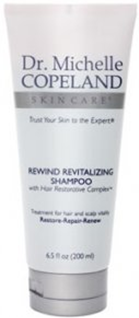


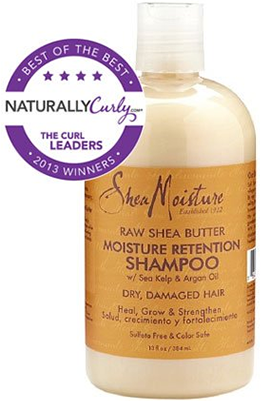
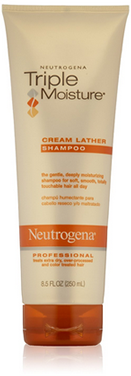




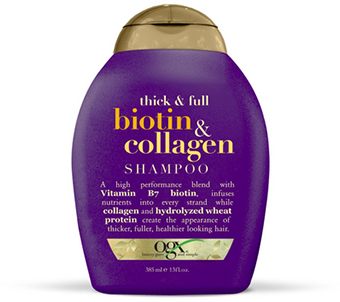


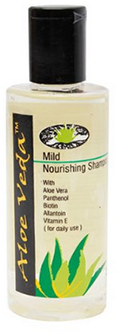

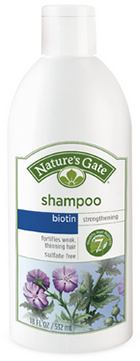


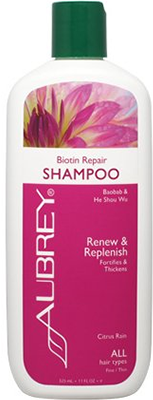

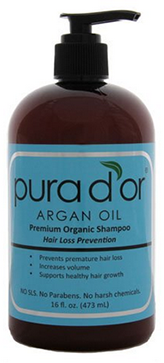
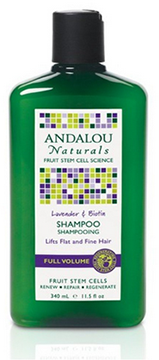

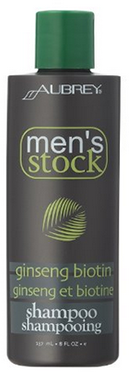
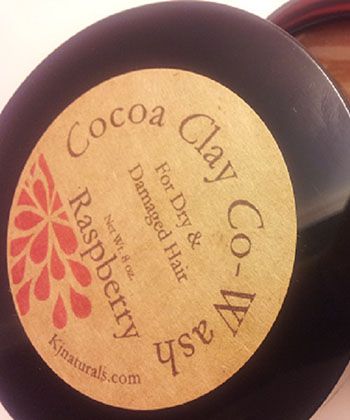


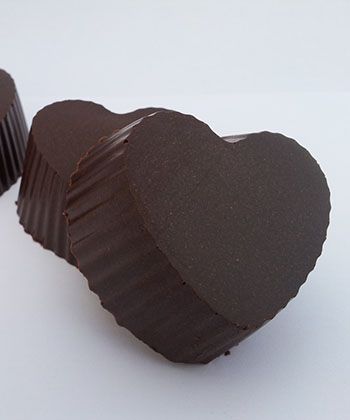










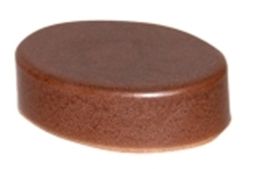


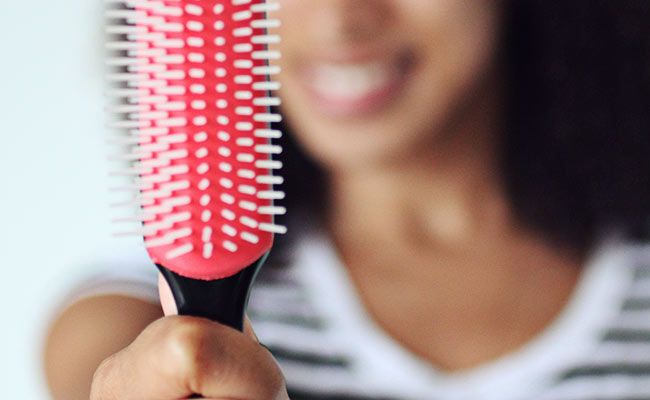


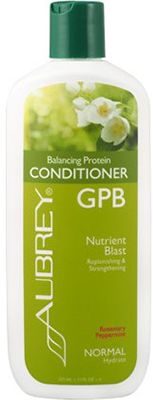



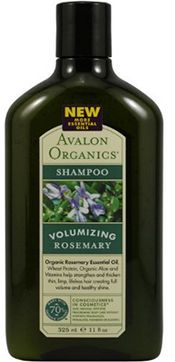

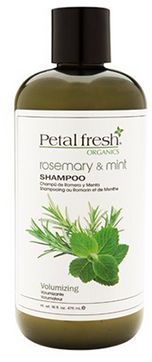







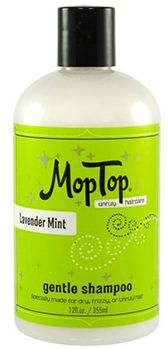







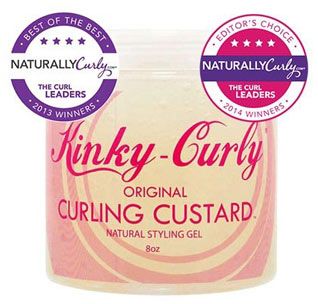



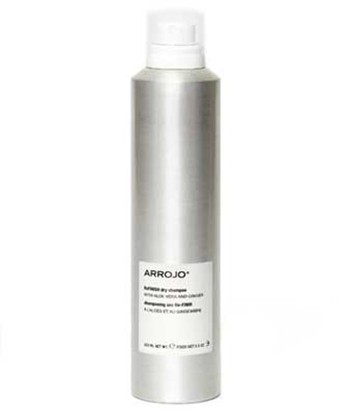

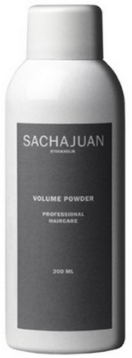

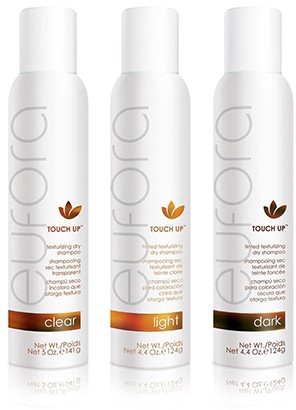

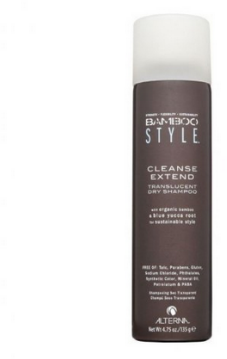













 DevaCurl Heaven in Hair
DevaCurl Heaven in Hair







